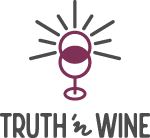expensive, status symbol, and even elitist. Not exactly wine for the budget-minded
consumer.
Bolstering this view, the March 31, 2013 edition of Wine Spectator stated that “the 2010s
were the most expensive Bordeaux vintage in history” upon release en premeur in spring 2011. En premeur is a capital-raising pricing
system used among the more prestigious properties in Bordeaux – where vineyard
and wineries expenses are among the highest in the world – in which producers
release a portion of their wine for sale the year following a harvest, after it’s
been rated by critics. The costs up to and including the bottling of the wine are
included in the price. The first release (tranche
in French) is the least pricey (a relative term here!) with subsequent tranches getting pricier and pricier.
to $3,400 a bottle (Chateau Petrus).
system is high-stakes wine merchandising … an area of the industry that I,
frankly, do not play in, nor do most consumers. So, when a colleague informed
me about the Grand Cercle Des Vins De
Bordeaux tasting event in Santa Monica last week I was excited to be
afforded the opportunity to sample some wines that I don’t often get to taste.
England) in which some of the worst weather conditions prevailed to create a very
tense growing season, with mixed results at harvest, and all the vintners at
Grand Cercle brought along their vintage from that year. 2) To give a nice comparison
tasting, most of the vintners also had samples of their 2011 vintage (in some cases
they had their 2010), which was another less-than-stellar growing season. 3) Most
of the wines were in the “affordable” category – under $30, with many being
under $20. (Not all of the wineries have California or even US distributors; the
goal of these trade events is to find one.)
Bordeaux grape growers, with rain, cool temperatures, hail, late bud breaks, forced
early harvests, and general weather mayhem. As I tasted wines at the Grand
Cercle (I stuck to the Merlots and Sauternes), many of the vintners I spoke
with reported that their 2013 harvest was half of their normal output.
fruit liveliness that I personally love. The Merlots were ripe, but not dense. The
2011s, with two more years of barrel aging, displayed less fruit, but more spice,
smoke, chocolate, and tannin – characteristics that develop with age.
Alain Raynaud, the driving force behind the event, is
himself a vintner as well as Chairman of Grand Cercle. Four years ago Raynaud
and his wife purchased Chateau du Parc,
a petite, unassuming property in the St. Emillion commune of St.
Sulpice de Faleyrans and produced their first vintage in 2011. At this
event, Raynaud’s wines were among my favorites. A blend of 80% Merlot and 20%
Cabernet Franc, the 2013 had a beautiful nose, with nice florals (violets), and
lovely fruit on the palette, while the 2011 had black pepper, espresso, and
subtle fruit, including red plums and blueberry. This, du Parc’s first vintage,
was very elegant, a character Raynaud says he strives for, and achieves in my
opinion. I was happy to see his price, too, at $19.99 a bottle. I’m hoping he gets a distribution deal soon so I can purchase some.
| Chateau de Myrat Sauternes |
The Sauternes region of Bordeaux also experienced low yields
in 2013.The Chateau de Myrat
Sauternes from 2013, which is 88% Semillion, 8% Sauvignon Blanc, and 4%
Muscadelle, was very fresh tasting, and
easy to drink, making me yearn for warm summer days in my back yard sipping
glass after glass. The 2011 had more spice from the aging. This was one of the
more expensive wines I tasted, selling for around $40 to $55, but worth it.
it may be a good idea to just drink them young. Dany Rolland, a vintner, on
behalf of Grand Cercle stated in event literature, “2013 will be a wine to
drink when it is young, revealing fruitiness and freshness; it should be a wine
for pleasure, devoid of powerful tannin, just plump and not green; an appealing
wine that will enable 2008s, 2009s, and 2010s to be left in the cellar out of
mind so you can enjoy this cheerful, immediate balance.”
